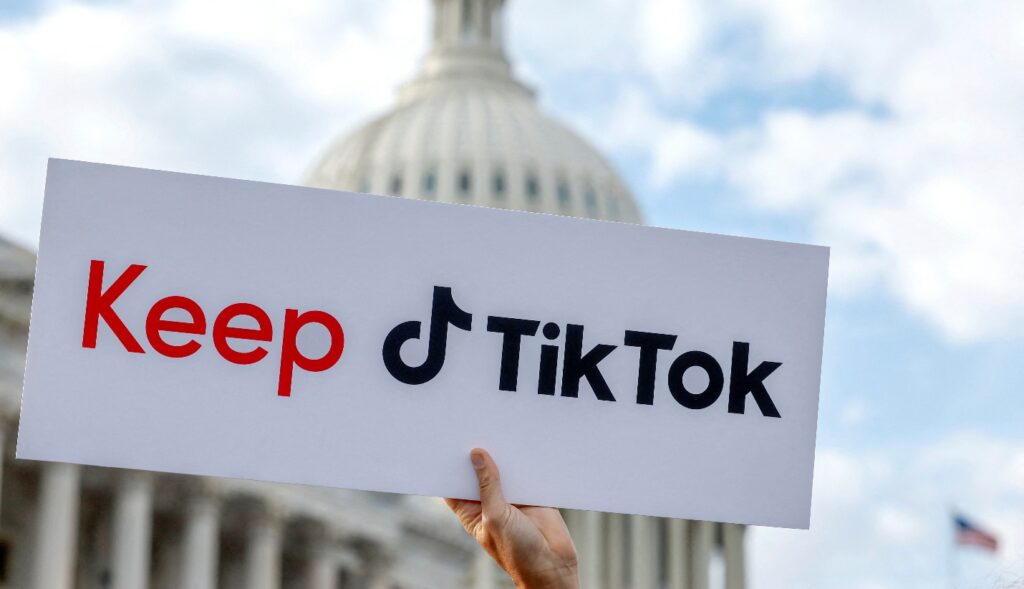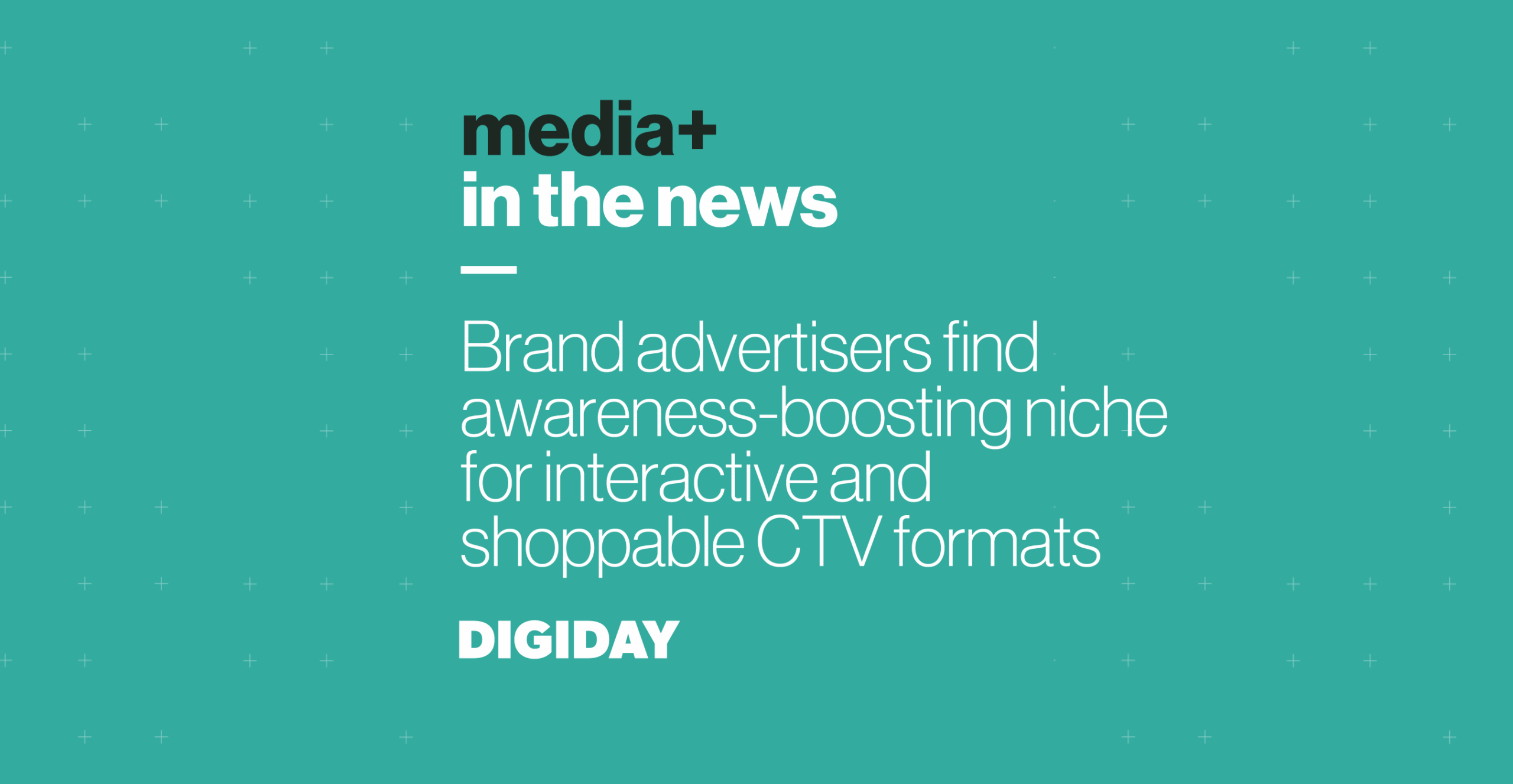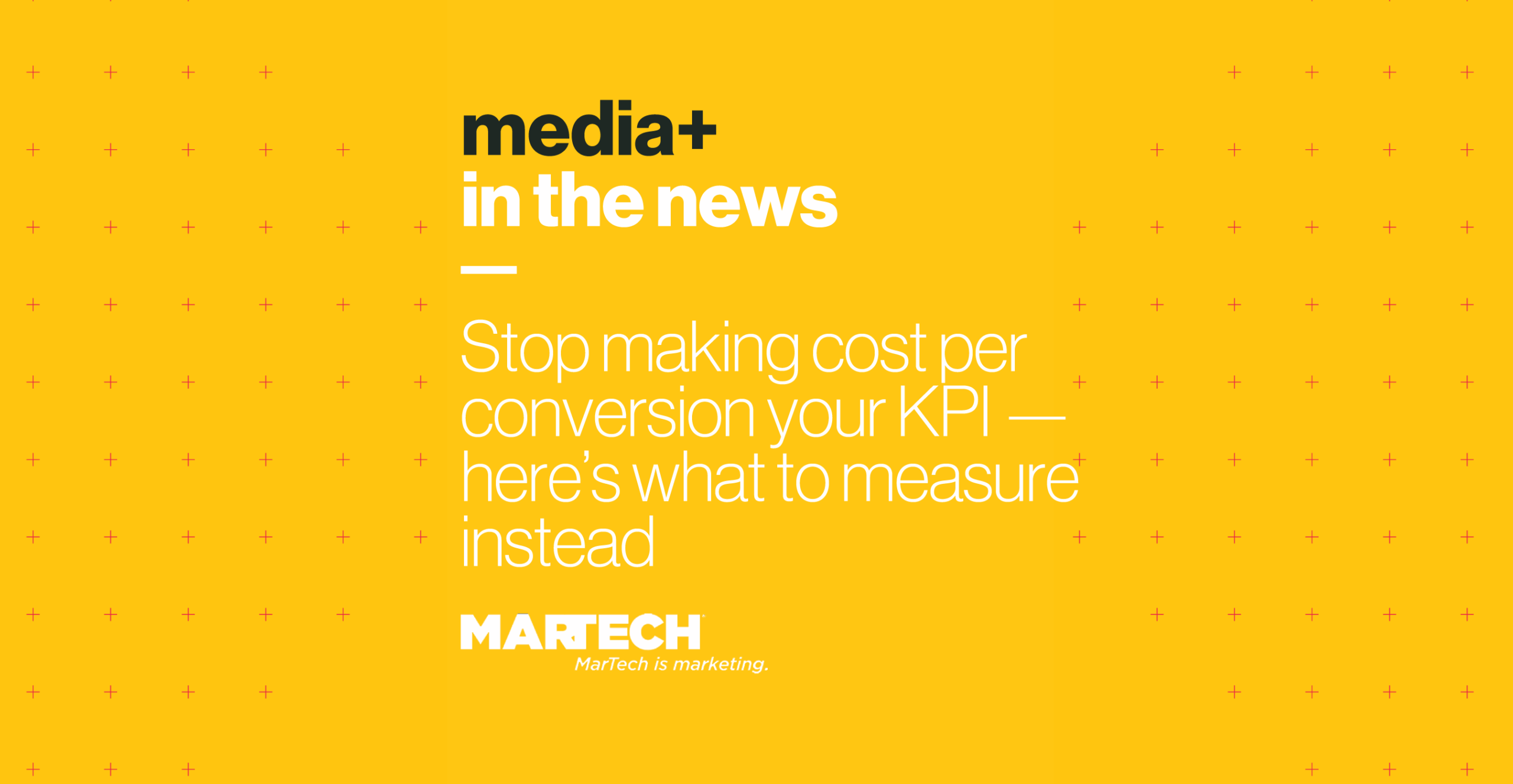If 2025 proved anything, it’s that marketing doesn’t slow down — it accelerates. AI became ubiquitous, brand marketing resurfaced after years of performance-driven focus, and social platforms spent much of the year managing their own instability.
Throughout it, Media+ evolved with our clients: testing new formats, rethinking measurement, leaning into what worked, and pushing back where platforms overreached. We sharpened personas, strengthened brand strategies, adopted new tools, and stayed intentional about where automation helps versus where humans must lead.
With the dust (mostly) settled, we’re revisiting our five big predictions — what came true, what missed the mark, and how these shifts set the stage for another fast-moving year in 2026.
1. The Resurgence of Brand in a Performance-Driven Ecosystem
Prediction: Marketers would rebalance brand-building and performance after years of over-prioritizing efficiency and short-term metrics.
Reality: This trend hit across the industry. After years of leaning heavily into lower-funnel channels without the halo of strong brand presence, many marketers hit a ceiling and shifted back into broad-reach, storytelling-led media to rebuild brand awareness and strengthen long-term demand creation.
Brands reinvested in:
- Tentpole TV + live sports: high-attention, high-cultural-value programming
- High-impact OOH: station dominations, 3D units, large-format takeovers
- Experiential activations: in-person brand moments that break through crowded digital environments

2. Social Media’s Trust Crisis — and AI’s Role in Shaping It
Reality: Trust took a meaningful hit — but users didn’t leave. Instead, they got smarter. With synthetic and AI-generated content flooding feeds, audiences gravitated toward creators, communities, and content that felt unmistakably human.
Brands felt this shift as well. While many continued using AI for content generation to keep pace with production needs, audiences grew more sensitive to what felt overly synthetic or “off-brand.” As pushback increased and new platform rules emerged, it became clear that the issue wasn’t AI itself — it was the lack of transparency around it.
To maintain credibility, brands began adjusting their approach, making AI use clearer and leaning into content that still felt grounded in real human perspective.
Platforms reinforced this direction with:
• AI-labeling tools
• Authenticity indicators
• Stricter verification requirements

3. Purpose-Driven Marketing Faces a Reality Check
Prediction: Purpose-led messaging would face increased scrutiny as consumers demand proof over positioning.
Reality: Purpose didn’t disappear — it became more practical. Instead of broad social statements or value-heavy campaigns, many brands focused on local community impact, employee-driven initiatives, and tangible actions that could be clearly demonstrated.
Influencer partnerships followed suit. Brands prioritized creators whose values genuinely aligned with their mission. When creators were true extensions of the brand — not scripts on camera — credibility and engagement strengthened.

4. TikTok’s Uncertain Future and the Ripple Effect on Social Commerce
Prediction: A potential TikTok ban could reshape the landscape and accelerate competition.
Reality: The ban never arrived — but the uncertainty alone reshaped strategies. Many brands tested TikTok for the first time, while others already fluent in short-form content expanded into YouTube Shorts and Instagram Reels to mitigate risk and diversify reach.
What we saw:
- Not a direct-response driver, but strong for discovery and product storytelling
- Not a direct-response driver, but strong for discovery and product storytelling
- New formats were tested, but short-form native video still dominated
- “Short-form” wasn’t interchangeable — Reels, Shorts, and TikTok each required platform-specific creative
- Brand media on TikTok drove downstream lift, contributing to increased site traffic and conversions via other channels

5. Niche Targeting and Personalization Redefine Marketing
Prediction: Brands would shift from mass reach to niche communities, contextual relevance, and more personalized messaging.
Reality: Instead of branching into fringe platforms, many brands focused on finding niche sub-communities within the major environments they already invest in – Meta, TikTok, and programmatic video/display.
Marketers leaned deeper into:
- Interest and behavior targeting to reach specific audience pockets
- Contextual and high-intent environments that aligned with content relevance
- Micro-segmentation within platforms (Meta passion groups, niche TikTok interests, programmatic contextual signals)
- Personalized creative by geography, life stage, need state, or intent
- AI-assisted creative versioning to scale message variations
Tools like Resonate helped M+ build richer personas and motivator-based messaging. Meanwhile, platforms pushed further into automation — especially Meta’s AI-driven placements and creative tweaks — which proved useful for broad DR but risky for brands needing tight guardrails and regulated language.
What 2025 Taught Us — and Where It’s Taking Us Next
2025 reminded us that marketing is strongest when innovation and humanity work together. Brands leaned into emotion, storytelling, creators, and real-world presence — all while adapting to rapid shifts in technology and audience behavior.
As 2026 approaches, several themes are coming into focus:
- Smarter, full-funnel measurement proving brand’s impact
- More intentional personalization that avoids overreach
- Greater transparency around AI and its role in content
- Bigger brand moments paired with disciplined performance
- Creators and real people anchoring storytelling
We’ll share our full 2026 predictions soon — but one thing is already clear:
The brands that win next year will be the ones that stay human, even as the technology around them accelerates.


